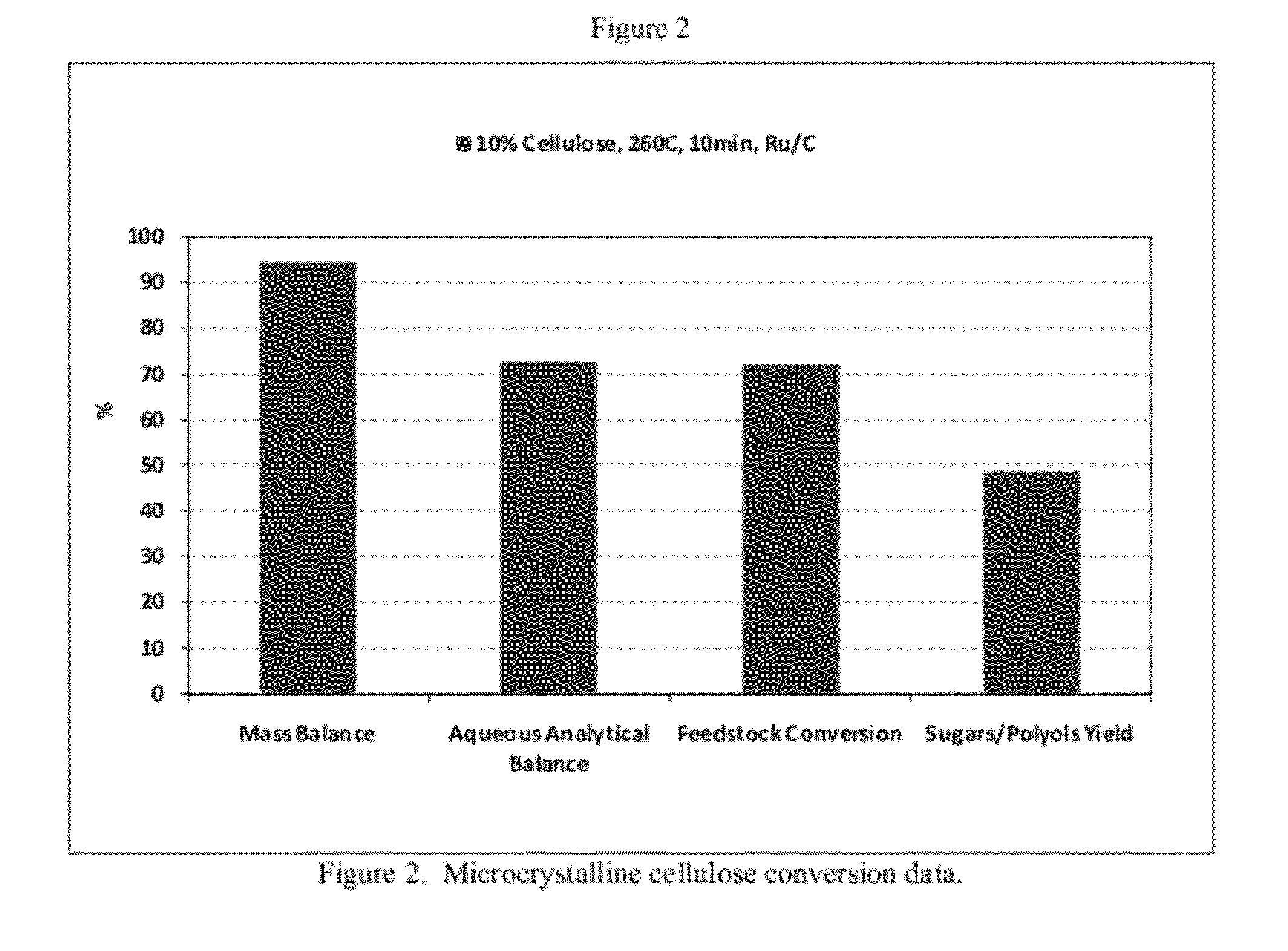Catalytic biomass deconstruction
- Summary
- Abstract
- Description
- Claims
- Application Information
AI Technical Summary
Benefits of technology
Problems solved by technology
Method used
Image
Examples
example 1
[0083]A biomass slurry containing 10 wt % microcrystalline cellulose (MCC) in water was prepared and converted to a biomass hydrolyzate using ruthenium on a carbon support. Experiments were conducted in a Parr reactor at 240° C. and 260° C., and at variable processing times of 10 and 20 minutes.
[0084]It was discovered that the thermal decomposition of the sugar intermediates is minimized / avoided with the formation of the more stable oxygenates that arise from the hydrogenolysis of the saccharides and polysaccharides. The Ru—C catalyst and short soak times at 260° C. provided high conversion and sugar-polyol yields, with 72% conversion of microcrystalline cellulose (MCC) and a sugars-polyol yield of 48%. A high yield of sorbitol (27 g / g MCC) was found with Ru / C catalyst as illustrated in FIGS. 2 and 3. The mass balance was 94% and aqueous analytical balance was 72%.
[0085]The effectiveness of the longer reaction time (20 min vs. 10 min) is shown in FIGS. 4 and 5. The extended reaction...
example 2
[0086]Several deconstruction catalysts were analyzed for their ability to convert 10% MCC in water to sugars / polyols. Experiments were conducted in a Parr reactor at 260° C. for 10 minutes. As illustrated in FIGS. 6 and 7, platinum improves cellulose conversion and provokes higher extent hydrogenolysis.
example 3
[0087]A biomass slurry containing 10 wt % bagasse was converted to biomass hydrolyzate using the Ru / C catalyst as described in Example 1. Experiments were conducted in a Parr reactor at 245° C. and 260° C. for 10 minutes. FIGS. 8 and 9 provide a comparison of the conversion and product yields for bagasse versus the MCC of Example 1.
PUM
| Property | Measurement | Unit |
|---|---|---|
| Temperature | aaaaa | aaaaa |
| Temperature | aaaaa | aaaaa |
| Temperature | aaaaa | aaaaa |
Abstract
Description
Claims
Application Information
 Login to View More
Login to View More - R&D
- Intellectual Property
- Life Sciences
- Materials
- Tech Scout
- Unparalleled Data Quality
- Higher Quality Content
- 60% Fewer Hallucinations
Browse by: Latest US Patents, China's latest patents, Technical Efficacy Thesaurus, Application Domain, Technology Topic, Popular Technical Reports.
© 2025 PatSnap. All rights reserved.Legal|Privacy policy|Modern Slavery Act Transparency Statement|Sitemap|About US| Contact US: help@patsnap.com



